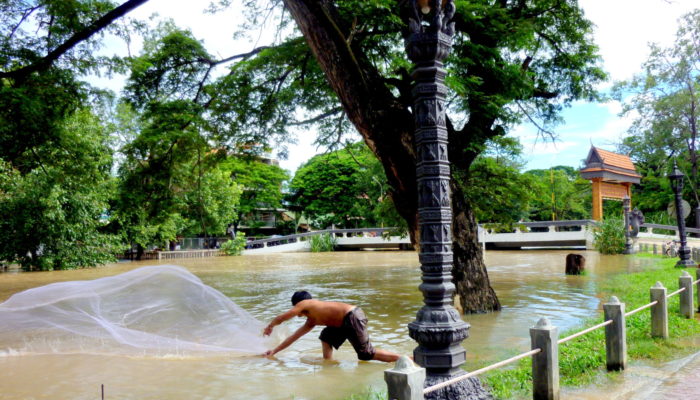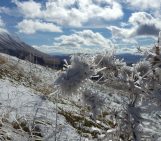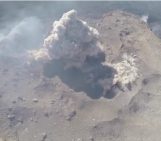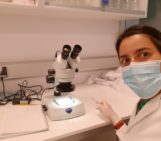
Around the world, the month of October is observed as Black History Month and includes the International Day for Disaster Reduction. While both these observances are significant in their own right, it gave EGU the opportunity to hear from geoscientists of Black, Indigenous, and People of Colour (BIPOC) communities about the many ways that race and natural hazards are linked: does one affect the other? What are the factors that hinder natural hazard response for BIPOC communities? And what role can researchers play to address these issues?
Read on for excerpts from our conversation with three scientists: Marjahn Finlayson, Research Scientist at Cape Eleuthera Institute, Bikem Ekberzade, Turkish journalist, photojournalist and documentary photographer, and Jazmin Scarlett, Senior Research Associate at the University of East Anglia.
What are some of the reasons why Black, Indigenous, and People of Colour (BIPOC) individuals are more vulnerable to the impacts of natural hazards?
Marjahn: I think from a Caribbean or Small Island Developing States (SIDS) perspective, neocolonialism plays a large part in increasing our vulnerability. Geographically, we are vulnerable to extreme weather events like hurricanes, flooding and extreme heat. In our (Caribbean) history, the eradication of indigenous people buried all the knowledge that could aid response to these natural events. Slavery and colonialism changed the physical landscapes of islands with cotton and sugar production. Today, with the introduction of tourism and globalisation, we see how neocolonialism affects national development. We also face a new-ish issue where national debt from disasters such as hurricanes makes it impossible for countries to fully recover from disasters.
Bikem: Belonging to a ‘minority’ group – even if the group may in fact be a majority in number, but not in the colonial minds of lawmakers – guarantees a few things: (1) Poverty, (2) Starting life on the back-foot, and (3) Being invisible when emergency strikes, often having to relocate with almost nothing to start over. So, essentially, poverty leads to more poverty.
Marjahn: Socio-economically, capitalism cannot thrive without anti-blackness, other forms of racism, and “othering”. In western countries, less socio-economically advantaged neighbourhoods, which are often mostly black and brown, have more air pollution, higher health risks and fewer resources. I liked to use spatial mapping for this reason in my undergraduate career. You can see on a map how these things intersect. I believe that we also saw this with the COVID-19 pandemic, where black and brown neighbourhoods received less support than their white counterparts. I don’t want to sound too radical, but there is an air of oppression and racial bias that allows white people of higher classes to not care about the vulnerability of these groups. I think that white people in more affluent countries need to challenge themselves by asking why that is.
Bikem: Remember Hurricane Katrina? New Orleans was flooded, with a subsequent coastal erosion and the Atchafalaya swamp water level rising. Post hurricane storm surge and flooding together meant a more immediate response was needed. Large predators like alligators from the swamp were swimming loose in the city’s well-known neighbourhoods. One of the neighbourhoods that was hit hard was my old neighbourhood, Bywater. It was a predominantly low-income area with majority of its residents being African Americans. When Katrina hit, I was no longer living in New Orleans but was watching from afar how those most affected were these low income, racially mixed minority groups. So I believe the answer to your question lies somewhere in there:
How come in the same country, different states respond to disasters differently? I will provide a clue: look to their demography. And then slowly start spinning history backwards in time.
Are there some natural hazards that pose a greater risk than others to people of colour? Can you give some examples of these from your own research or experience?
Jazmin: This would be hard to quantify, but I believe currently, meteorological and climatic hazards, particularly those that are being impacted by a changing climate, are of a greater risk to people of colour. From my own research however, it has been Black people (enslaved and then descended from the enslaved), indigenous peoples and persons of colour who have been at greater risk from the volcanic eruptions of La Soufriere on the Caribbean Island of St. Vincent. The indigenous peoples were pushed closer to the volcano by colonists, and enslaved Africans were forced to work on some of the largest plantations on the island that were also close to the volcano due to the fertile soil. Some of the poorest communities still live in these areas today.
Marjahn: People of colour are vulnerable to climate change – increases in temperature affect health, droughts and intense rainstorms that impact agriculture and water supply, and volcanic eruptions affect air quality. I study how climate change affects tropical cyclones. From my experience, I can say that more intense hurricanes in the Atlantic will most likely impact people of colour and the less socio-economically advantaged in the Caribbean. More people of colour in black-governed countries and black neighbourhoods will be vulnerable to intense rain, flooding, storm surge, waterspouts and other factors that come with tropical cyclones. Now keep in mind, tropical cyclones occur in many tropical regions, so islands in the Pacific are also at risk. The Philippines alone experiences intense hurricanes every other year.
But the thing that concerns me is the response to natural hazards. For example, I am from The Bahamas and was in Nassau when Hurricane Dorian passed over us in 2019. The mobilisation by citizens and international organisations to help those in Abaco and Grand Bahama was inspirational, but there was a lot left to be desired from our leaders.
There is the difficulty that comes with debt when countries like ours try to recover from natural hazards. It is practically impossible to recover with disaster relief alone and repay loans when another disaster may strike soon after.
Another tough example to witness with post-hurricane recovery was in Puerto Rico with Hurricanes Maria and Fiona. Recovery efforts were drawn out and concerning.
As climate change-related extreme events become more common, researchers are finding that the same socio-economic factors that contribute to poor health outcomes among racial and ethnic minorities also affect their vulnerability to climate change. What are your thoughts on the way that climate change, health, and socio-economic background interact with natural environments?
Marjahn: I think that healthcare is a concern in general for a lot of reasons. With climate change, we should expect more hospitalizations due to increasing temperatures, increased flooding, more extreme weather events and higher chances of zoonotic pathogens leading to more disease spread. Folks from lower socioeconomic groups, especially those of colour, may already have problems with access to healthcare. Biases in western medicine may also be a detrimental factor for this group. In the COVID-19 pandemic, which I view as a climate change-related incident, white people were less willing to follow healthcare protocol when they saw that black and brown people were most affected by COVID-19.
Another thing that I often think about, in terms of healthcare and climate change-related health issues, is how much western science has dictated our view on how all bodies are similar despite black and brown ancestral trauma affecting our reaction to different environmental changes. I guess that there is both a disregard and silencing of people of colour in healthcare (and other STEM fields) which will only be exacerbated as the climate continues to change.
Lastly, what is the one thing you think researchers could be doing right now to better support communities of colour facing the challenges of natural hazards in their own lives?
Bikem: Despite its living mosaic, the city I lived in (New Orleans) still has memories and marks of post-colonialism, addiction, high crime rate, food stamps (a version of modern slavery) and the inescapable whirlwind of poverty. I choose to list these details, because when we label groups for easier categorization, we forget that these groups are made up of individuals.
The BIPOC acronym may throw many people in the same basket but in fact, on the ground, matters are far more diverse, more heterogeneous and inherit a considerably long history.
It’s important for researchers to acknowledge this heterogeneity and be mindful of these differences when engaging with local communities.
Jazmin: Listening to them, believing them. Not having a ‘white saviour’ complex in addressing challenges – work with the communities, don’t talk over them and don’t insert yourself to make it about you, you will need to gain people’s trust, and that is done by genuinely caring about others. And be humble about it, there’s no need to brag every five minutes that you have done x, y and z to help marginalised and vulnerable groups.
Marjahn: Listen to the communities of colour and engage with them. It’s one thing to learn about what people are going through when a hurricane or drought hits, and a whole other to comprehend what that experience is like. I am guilty of thinking that my research may benefit people without actually speaking to them to see if that’s what they want or need. Research is great, but we need to be able to connect with people who experience these disasters. It’s also important to acknowledge (as I think I mentioned before) that the western way of science is not the only way that science has been done historically. Indigenous knowledge, no matter where you are, should always be part of the research process.
We thank Marjahn, Bikem and Jazmin for their time and honesty in sharing these insights. If you find this blog helpful or believe someone you know could benefit from it, we encourage you to comment and/or share this blog on your social media platforms.




